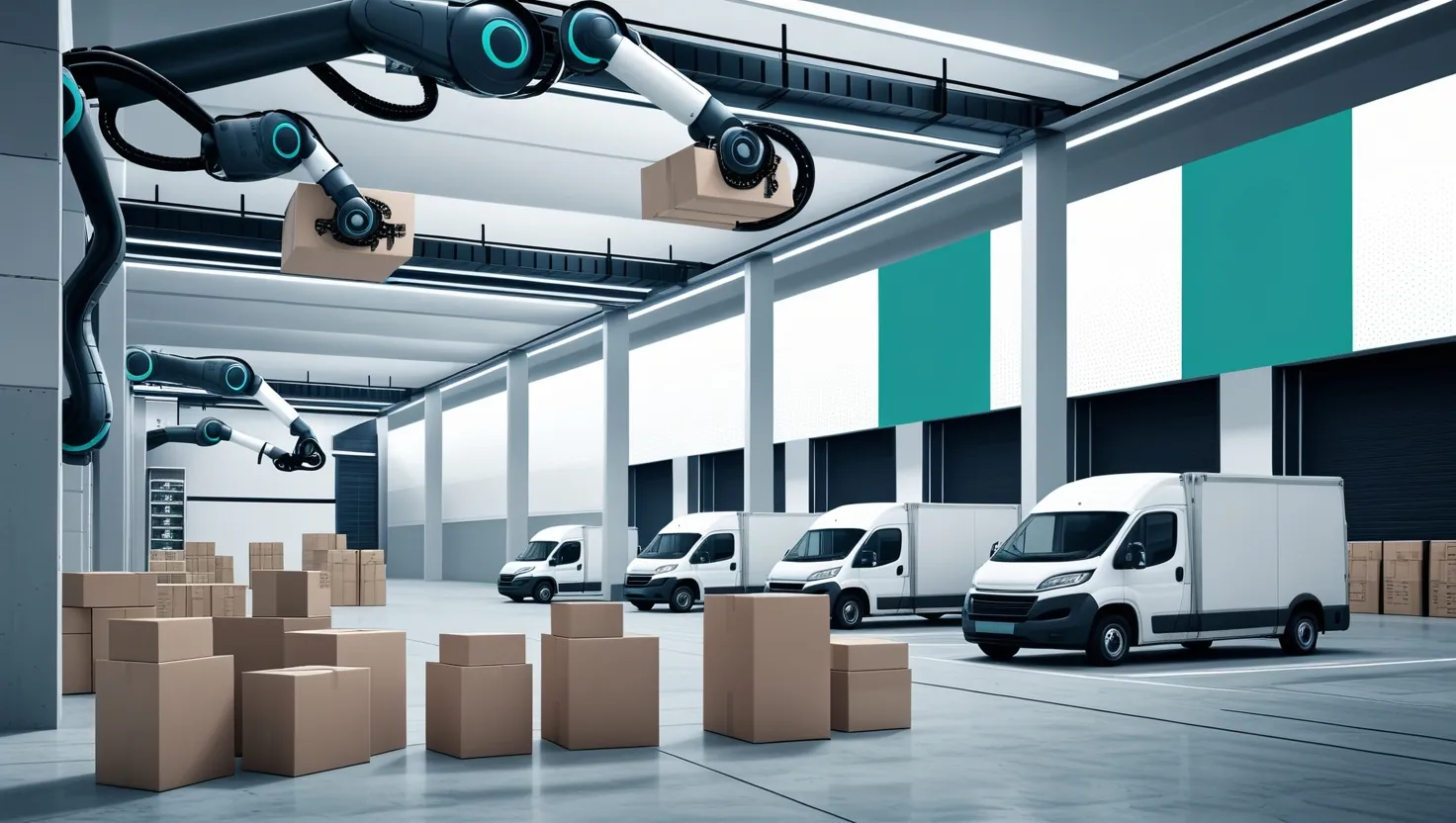Speed and cost shape the entire logistics world these days. What started as a rush to please customers hungry for overnight shipping has turned into an arms race among companies, each fighting to be quicker, leaner, and greener than ever. Let’s step into this landscape, looking past the obvious and diving right into the small but radical changes that are making the delivery of everything—from furniture to fresh food—faster and less expensive. The innovations at play might sound high-tech, but their impact can be felt every time a package lands on your doorstep just hours after you clicked ‘buy.’
When we think about delivery speed, the image that often comes to mind is a swarm of vans and bikes weaving through traffic. But the real story starts long before the van hits your street. Consider the rise of smaller, regional fulfillment hubs. Instead of dumping all their inventory in giant warehouses outside cities, companies like IKEA have set up compact urban centers. These micro-hubs are sprinkled closer to customers, slashing transit times for the critical last stage—what many call the “last mile.” Suddenly, deliveries that used to take two or three days can happen the same day, cutting window estimates to under 24 hours for millions of urban shoppers. These hubs also shrink the carbon footprint, because trucks roam shorter distances and make fewer stops. What if every retailer started treating fulfillment like a neighborhood service instead of a distant operation? Would delivery trucks stop clogging highways, or could the whole urban supply engine run cleaner, too?
“If you do build a great experience, customers tell each other about that. Word of mouth is very powerful.”
—Jeff Bezos
Behind the scenes, the process of deciding “who goes where” isn’t as chaotic as it looks from the sidewalk. Enter today’s AI-powered routing systems. Imagine trying to plan thousands of deliveries in a city as weather, traffic, and new orders keep shifting the puzzle in real time. Algorithms now swallow mountains of data—road closures, fuel prices, even seasonal weather—and spit out the perfect route in seconds. For example, Maersk’s use of AI routing shaved 12% off their fuel bills. That’s not just smarter navigation—it’s less pollution and cash saved for reinvestment. Here’s a twist: with each year, these AI tools get sharper by learning from each completed delivery, turning today’s data into tomorrow’s competitive edge. Would your route home change if a computer factored in the likelihood of rain and rerouted you through the fastest, driest street every day?
How often do we think about what protects the goods inside our boxes? The science of packaging is usually ignored—until you realize what a difference it makes. The new frontier in logistics is sustainable packaging redesign. Companies are moving away from heavy, wasteful materials toward lighter, modular options that cushion goods and conform to the product’s shape. This slashes shipping weight, shrinks the chance of damage, and saves money on returns. Some companies are experimenting with reusable wraps or “right-sized” cartons produced on demand. The benefits stack up: less fuel burned, less waste in landfills, and often a boost in customer satisfaction scores. Could something as simple as a custom-fitted box deliver as much value to a business as a high-tech robot?
“Innovation distinguishes between a leader and a follower.”
—Steve Jobs
Let’s chat about a rarely discussed phenomenon: transportation networks where fierce rivals actually become partners. Shared transport networks allow companies—even direct competitors—to fill unused truck space or swap warehouse facilities on the same route. Instead of each company running half-full trucks crisscrossing the country, they agree on common backhaul routes and maximize every square foot. This collaboration can cut costs and slash emissions for everyone involved. Of course, it comes with challenges—trust, data sharing, coordination—but when done right, it turns inefficiency into profit. What would it take to convince rival brands to actually benefit by working together behind the scenes?
In the warehouses themselves, the future has already arrived. Automated sorting technologies—think robotics arms, computer vision, and conveyors that recognize products at a glance—are making the traditional warehouse almost unrecognizable. These machines speed up the sorting and packing process, allowing goods to zip from trucks to shelves to outbound vans with lightning precision. They reduce the number of human errors and keep operations humming 24/7. For smaller businesses, the cost barrier used to be too high, but prices are slowly dropping, and modular systems now let even mid-sized warehouses automate selectively. Robots don’t get tired or sick, and they scale with demand, especially during holiday spikes.
“To improve is to change; to be perfect is to change often.”
—Winston Churchill
What does all this mean for the bottom line? Hard data shows that early adopters see delivery times drop by 15-30% and overall logistics expenses sink by 10-20%. Regional hubs and smarter routes mean less waiting; lighter, greener packaging means happier customers (and cash saved on returns); shared networks squeeze out old inefficiencies. Automated sorting doesn’t just speed things up—it also brings a drop in package damage and shrinkage. But maybe the most undervalued payoff is customer satisfaction. The moment you turn “expect delivery in 5 days” into “package arrives tomorrow,” you build loyalty that lasts.
Of course, none of this happens overnight. There are hurdles—upfront costs to set up new technology, training staff, and the tricky art of synchronizing with partners who may have entirely different goals or systems. Technology integration can stall if data formats conflict or networks don’t play well with each other. Even green packaging has its limits if supply chains for biodegradable materials aren’t mature. Yet, companies pressing forward often start with smaller, “quick win” projects: redesigning packaging is a relatively easy win before leaping into warehouse robotics.
At this stage, you might be wondering: What can a smaller business do to keep up with giants like IKEA or Maersk? The adoption pathway is often less daunting than it seems. Step one is to assess where waste and delay really appear—are your shipments bogged down by bad routing, or are damages and returns eating your margin? Low-cost tools for route optimization and lightweight packaging are accessible now. Cloud-based platforms allow shared transport even for very small volumes. Only after these bases are covered does it make sense to leap into fuller automation or to set up distributed micro-warehouses.
Let’s not forget one subtle but seismic outcome: emissions from deliveries, a subject under growing scrutiny. Every minute shaved off delivery time, every kilogram trimmed from shipping weight, helps cut a business’s carbon footprint. For many customers, knowing their order shipped in a recycled box from a nearby center is no longer a nice-to-have; it’s a factor in their buying decisions. Some regulators are even proposing mandatory reporting of delivery emissions, so these innovations aren’t just optional—they’re fast becoming essential for staying competitive.
So, I ask you—when was the last time you tracked a package, anxiously refreshing the status every hour? Did you wonder about the technological dance that brought it to your door so quickly and (hopefully) in perfect shape? The next time you order something, remember: there is an invisible network of small, smart, and sometimes surprising innovations working behind the scenes to keep your experience fast, affordable, and planet-friendly.
“The best way to predict the future is to invent it.”
—Alan Kay
As we look forward, the competitive edge in logistics won’t necessarily come from who has the biggest warehouse or the most trucks. Instead, it will belong to those who combine creativity with technology, who aren’t afraid to partner with former rivals, and who value both customer happiness and planetary health. The toolbox is expanding, and the strategy is simple: start small, iterate fast, and always keep your eye on what truly matters—getting the right package to the right place as quickly, cheaply, and sustainably as you can.






